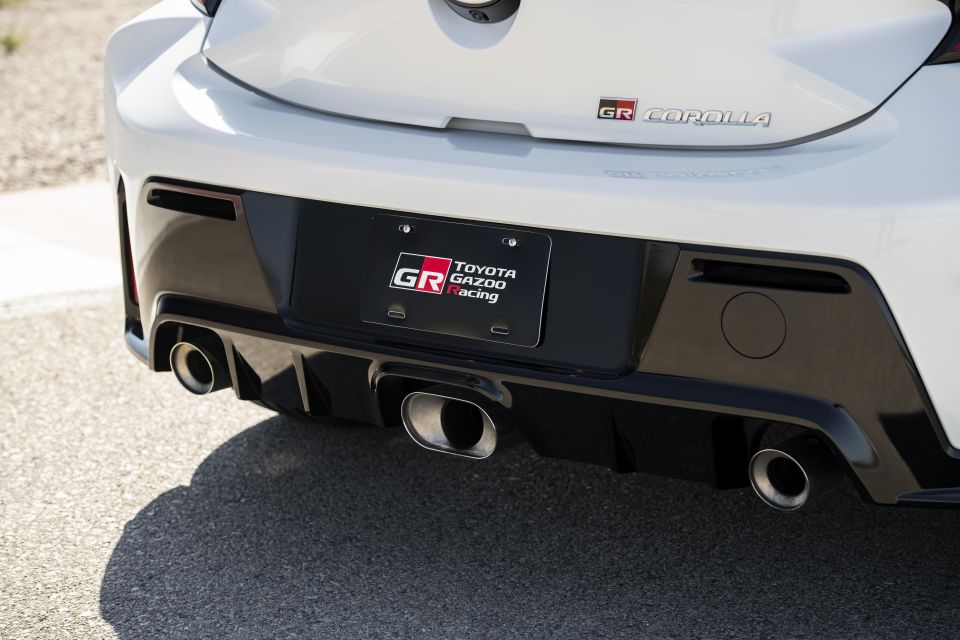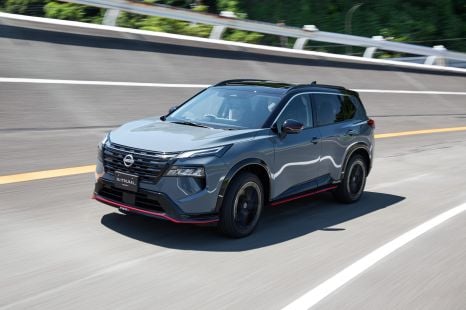

James Wong
2025 Hyundai Tucson review
2 Months Ago

Publisher
The Toyota GR Corolla is undoubtedly one of 2023’s most anticipated hot hatches, set to land in our market in just a matter of weeks.
Although production will be very limited in numbers, it extends the GR family as a big brother to the mechanically related GR Yaris.

At this stage just 500 units are slated to come in its first year. Given the expected demand, it’s expected plenty of potential customers will miss out on a car.
One of the reasons the GR Corolla is proving to be a big drawcard for the Japanese brand is its aggressive, modern design.
Given it carries a high performance all-wheel drive powertrain that outshines the one found in the GR Yaris, the design team at Gazoo Racing have upped the ante to match its performance.
We did a quick walk around video with four-time Australian Rally Champion, Neal Bates, who explained all the different design elements and their uses.
Powering the GR Corolla is the same 12-valve ‘G16E-GTS’ 1.6-litre three-cylinder (single-scroll ball-bearing) turbo as used in the GR Yaris, but now pumping out an extra 20kW of power.
Official figures rate the GR Corolla at 220kW at 6500rpm, while the torque is an unchanged 370Nm between 3000 and 5550rpm – except in the Morizo Edition, which offers 220kW and 400Nm.
The 2023 Toyota GR Corolla has some distinct characteristics over the standard car. The front fender overhang is 20mm longer per front side, and 30mm on the rear. The bonnet height is raised by 25mm with a power bulge to fit the engine.
Look closely and you’ll notice the rear edge of the GR Corolla’s fenders has been shortened for what Toyota says is aerodynamic performance, which is also why the differentiated front under spoiler carries a noticeably raised central and horizontal section to better manage airflow.

Other changes include:

As you can seen in the video, the rear diffuser is home to three tailpipes, with the larger centre outlet kept open at idle and under 30km/h to emphasise the Corolla’s exhaust note, before closing off. Above 4500rpm it reopens to reduce back-pressure.
On the whole, the GR Corolla is anything but just a tweaked Corolla ZR.
It’s assembled at the same skunkworks section of Toyota’s Motomachi plant as the GR Yaris and (formerly) Lexus LFA, with more manual assembly techniques and slower build times – hence the low production numbers.
While the GR Corolla uses the donor car’s GA-C platform, the body has 349 more spot welds, and up to 20 feet of added structural adhesive.
MORE: Toyota GR Corolla review
Where expert car reviews meet expert car buying – CarExpert gives you trusted advice, personalised service and real savings on your next new car.
Alborz is the founder of CarAdvice (sold to Nine and now Drive) and co-founder of CarExpert. He is an honourary adjunct professor & entrepreneur in residence at the University of QLD. He loves naturally-aspirated V8s, V10s and V12s and is in denial about the impending death of the internal combustion engine. The best way to reach him is via Instagram.


James Wong
2 Months Ago


Josh Nevett
2 Months Ago


William Stopford
2 Months Ago


Max Davies
1 Month Ago


William Stopford
19 Days Ago


Andrew Maclean
19 Days Ago